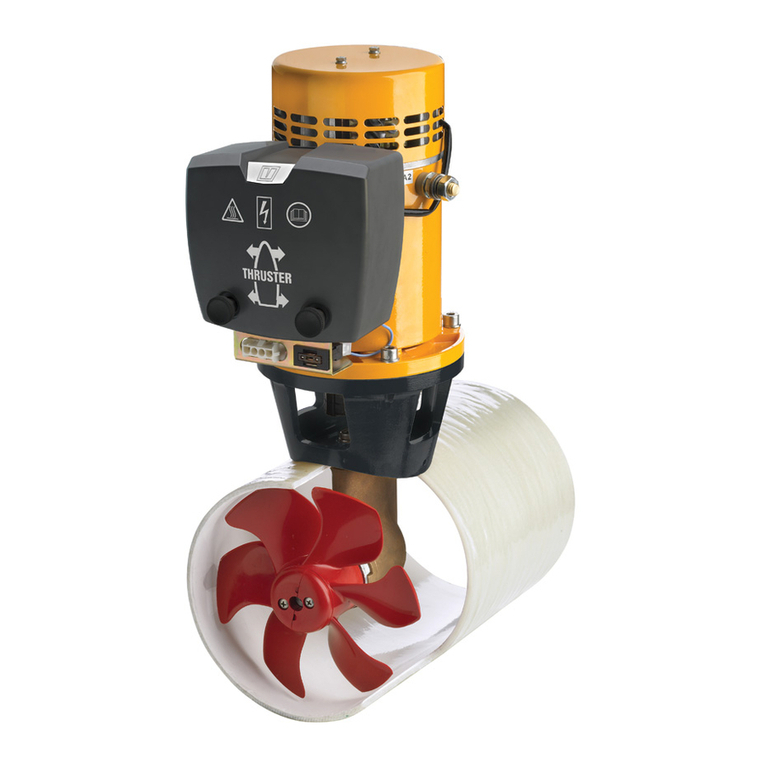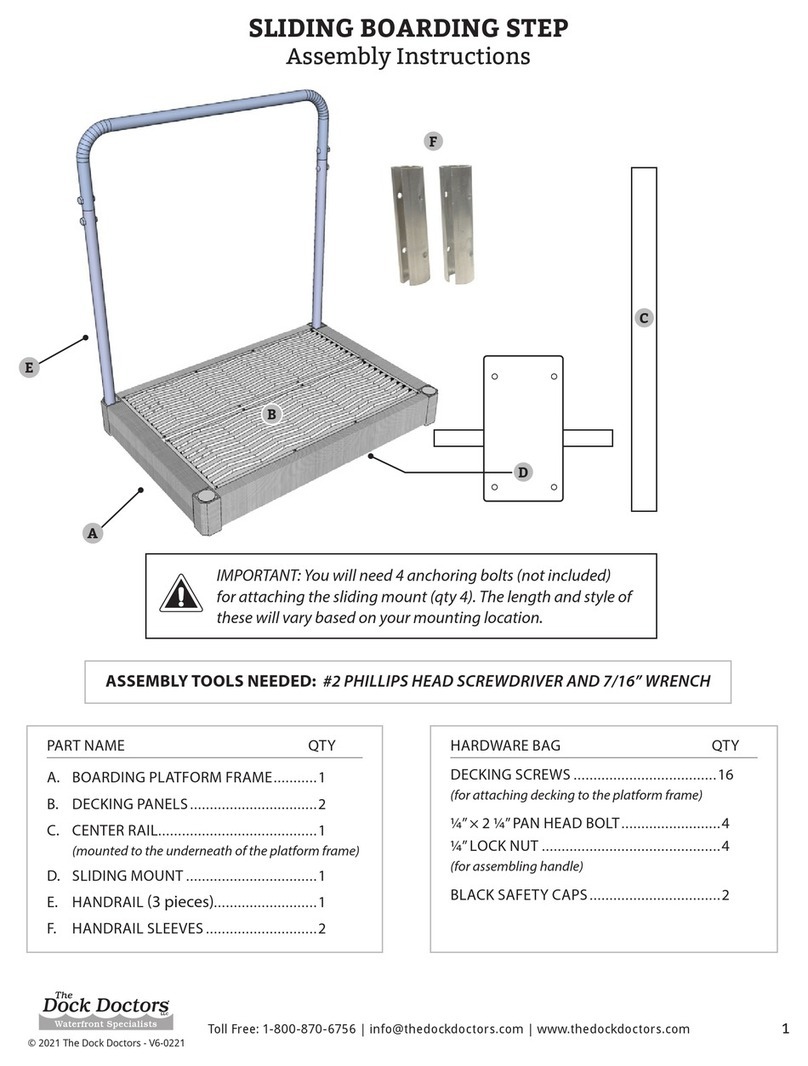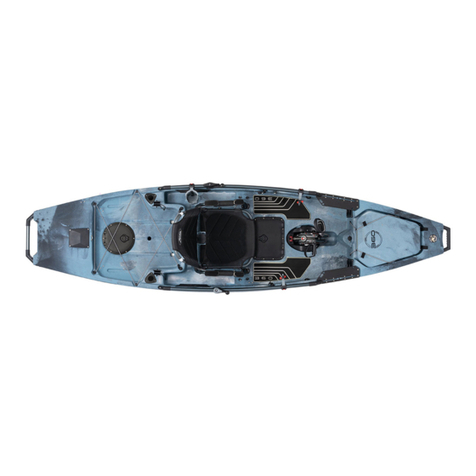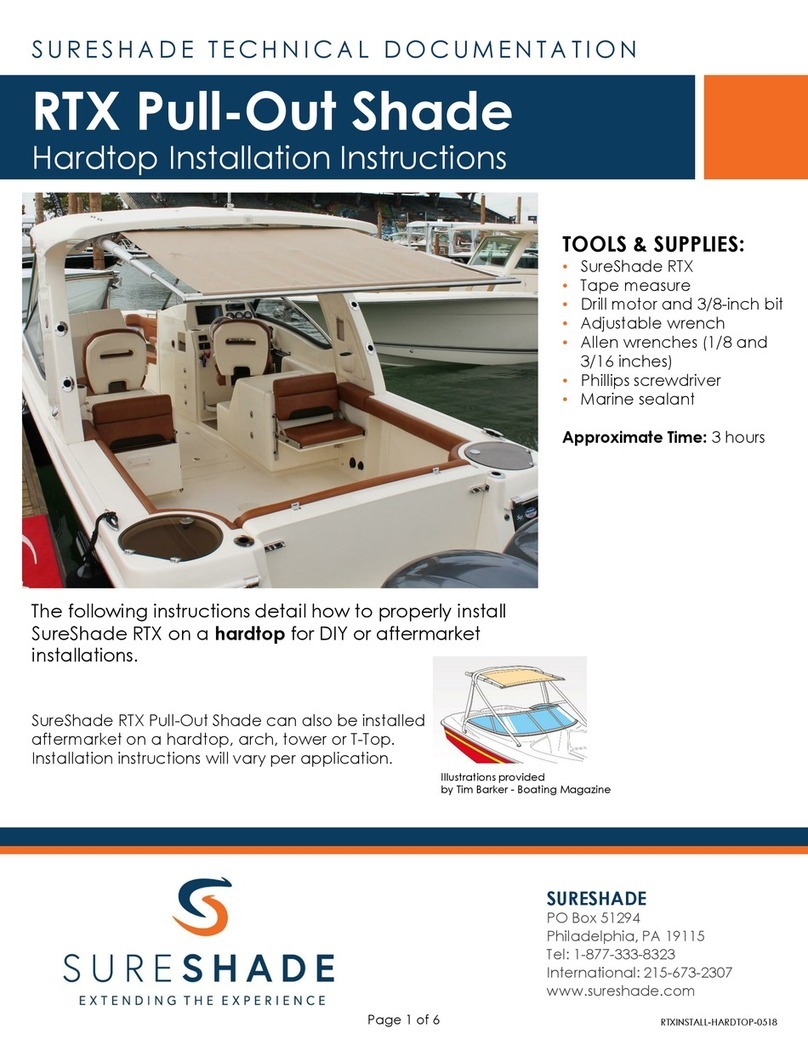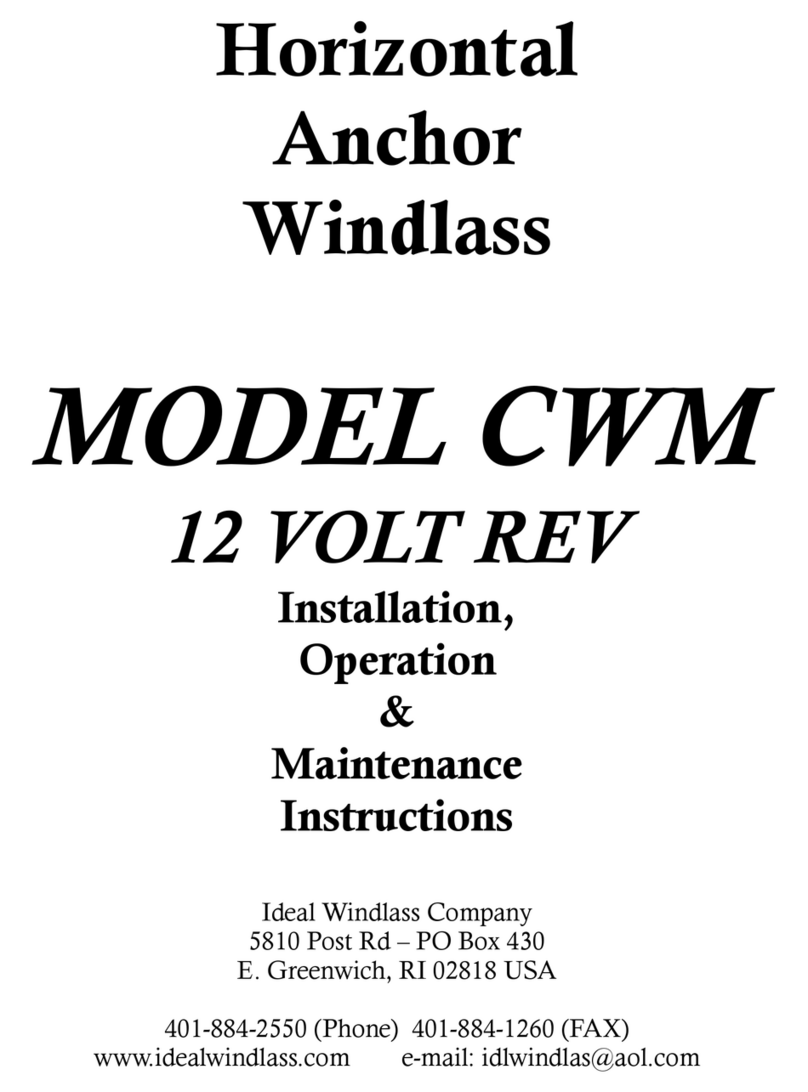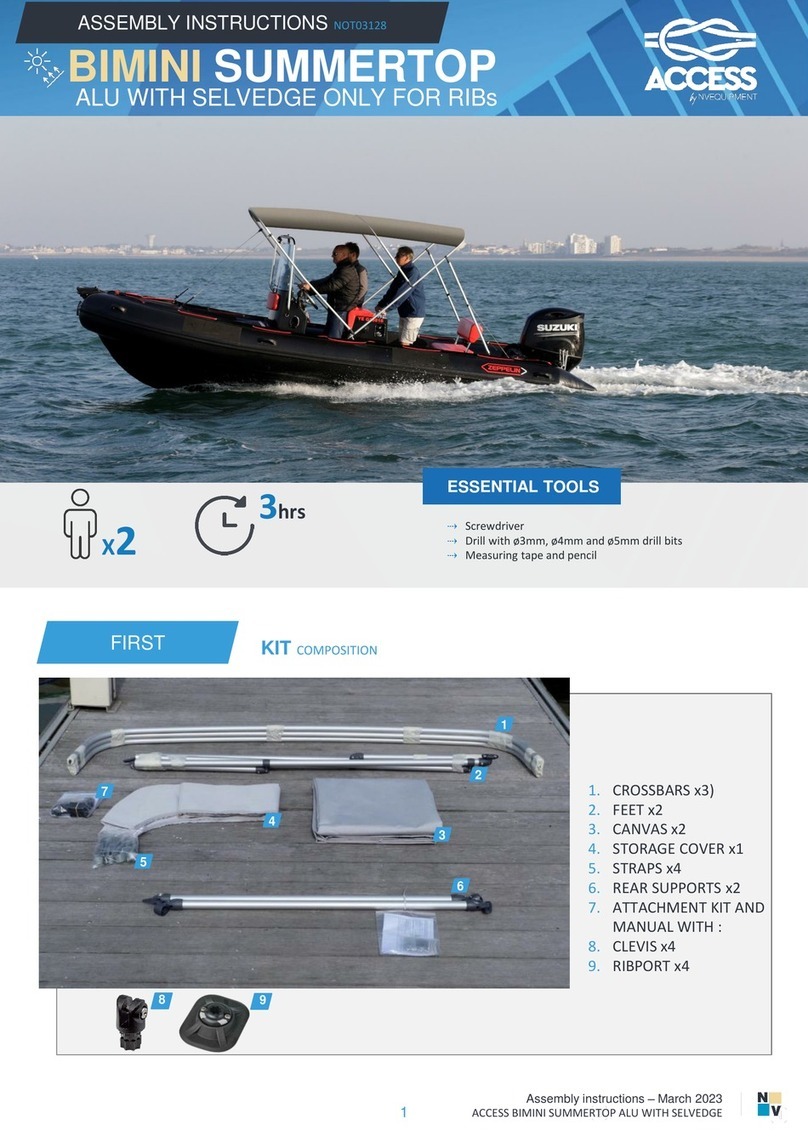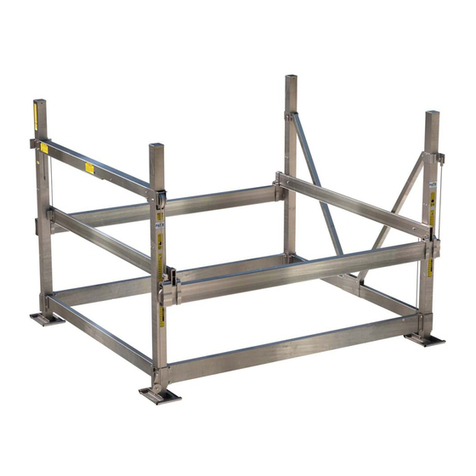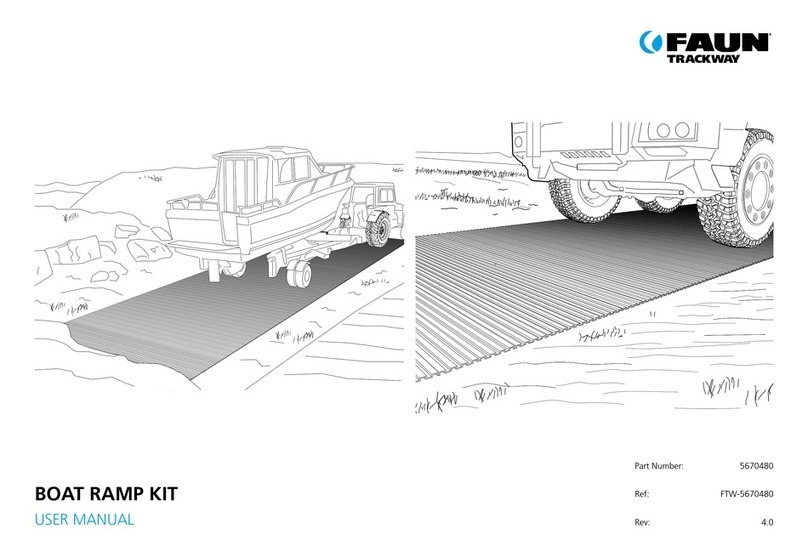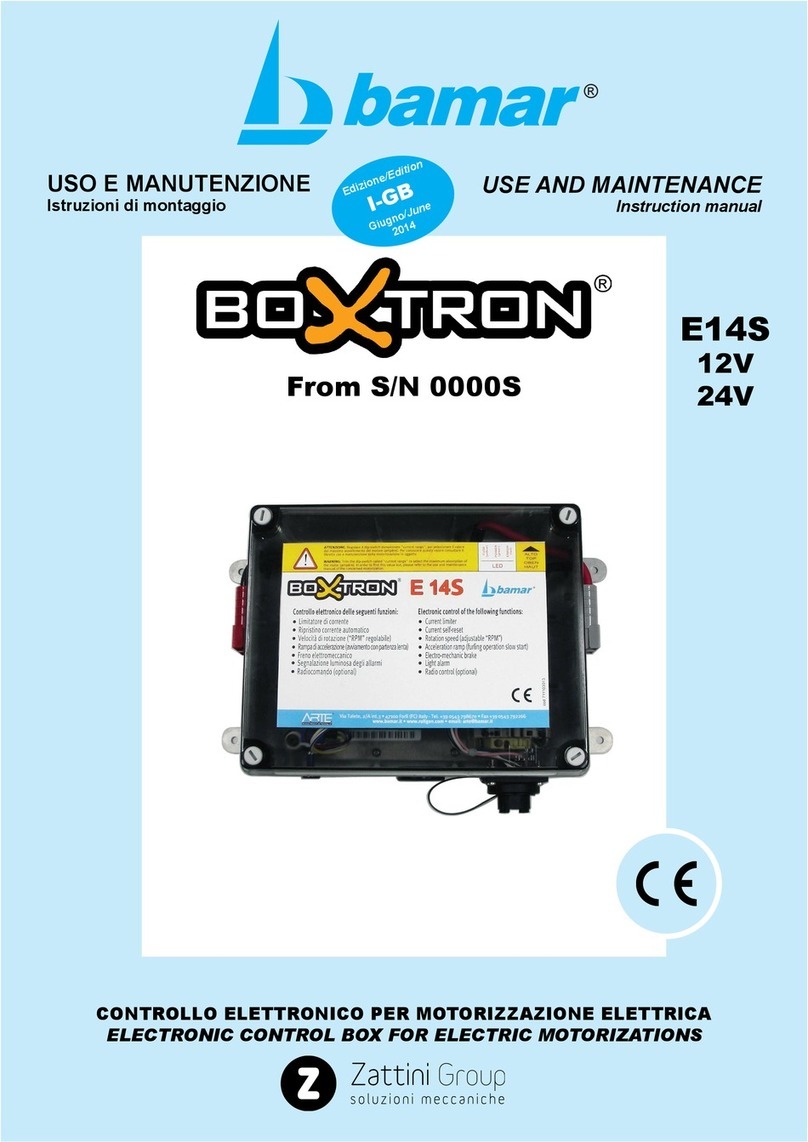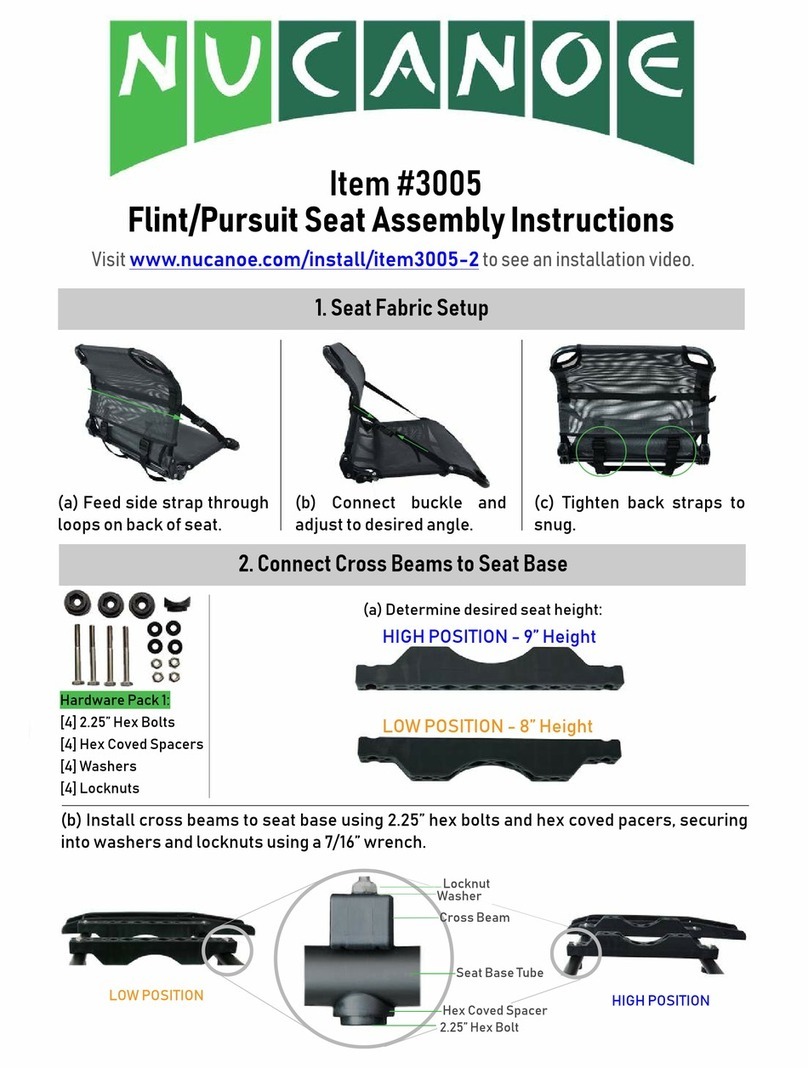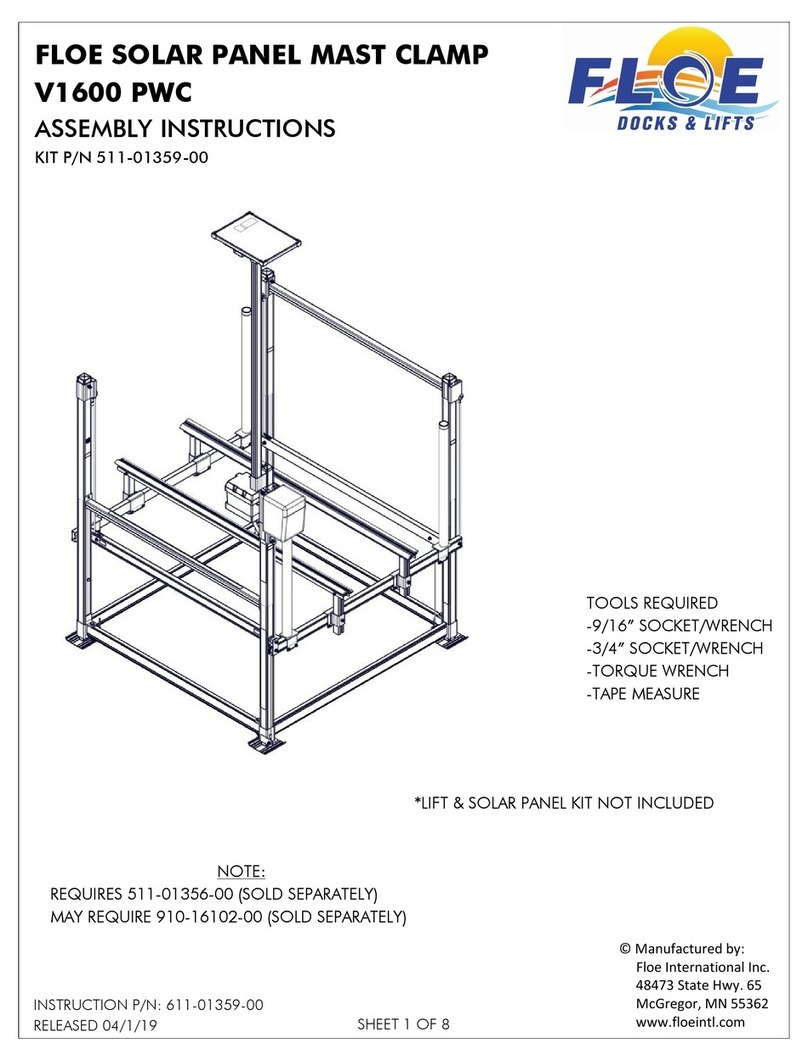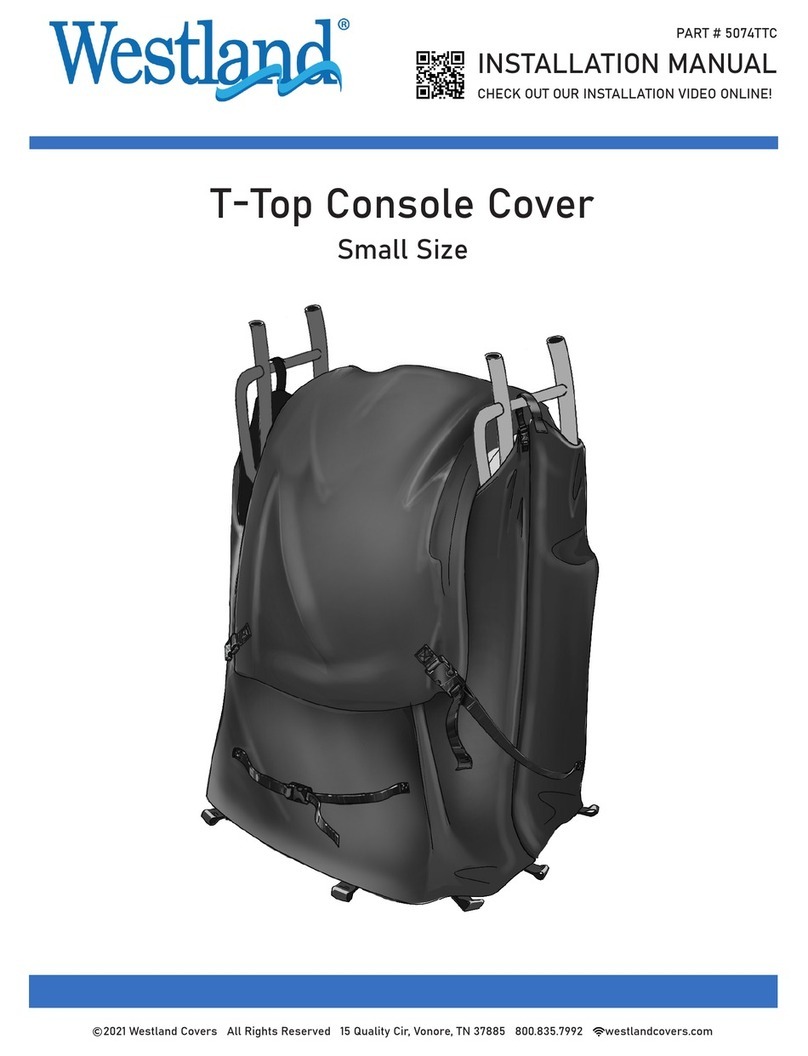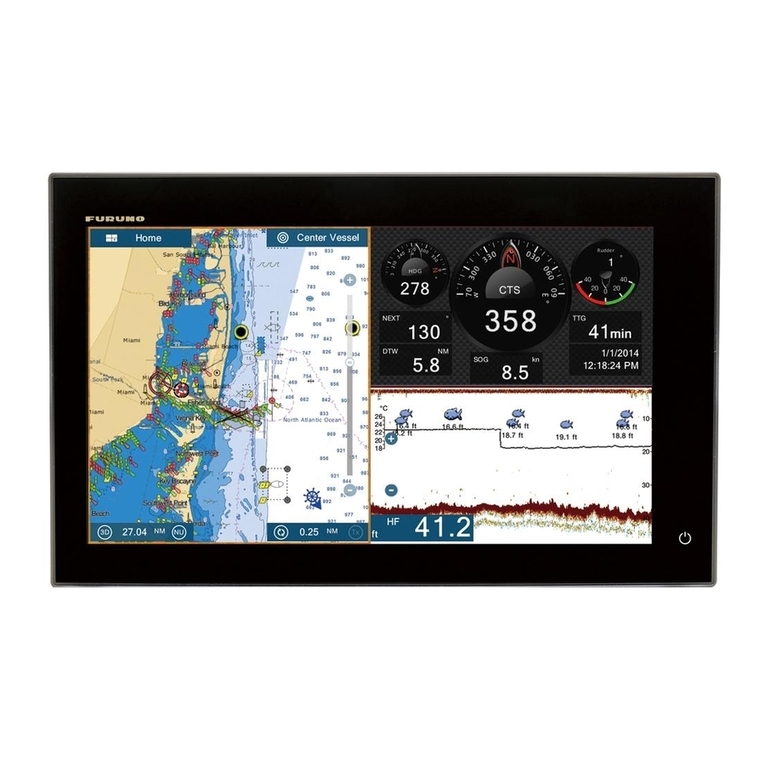STEP 2: INSTALL THE ADE STAND MOUNTING
Note: You can use the ADE shipping container as a temporary
platform to support the ADE and provide clearance for the connector
and cable by cutting small hole on the cardboard box.
Connect the 9-pin circular connector on the interface cable to the
ADE receptacle on the bottom of the ADE. Elevate the ADE to the
approximate intended install height and use a temporary platform
to hold the unit. Orient the grounding lug on the bottom of the
ADE towards the stern of the vessel. Route the interface cable
along the deck to a location where Mains power is available. Tape
the cable to the deck to reduce any trip hazard during the
temporary operation of the system. A suitable mounting bracket
or mast needs to be procured or fabricated to support the ADE.
Recommended stand mounting
Note: Ship-side mount may dier from the example shown. Neoprene bonded stainless steel washers are
included to protect the anti-corrosion coating on the stand and to prevent galvanic corrosion of the assembly.
316 stainless steel hardware is recommended for installation.
1. Take care when transporting the radome (1) and stand (2) so as not to damage the
corrosion resistant coatings.
2. Place an isolation gasket (3) onto the ship’s mounting post (8).
3. Place the stand (2) onto the isolation gasket, with the slotted side facing down.
4. Slide a neoprene bonded isolation washer (5) onto an M10 hex head bolt (4), with its metal side
contacting the bolt.
5. Slide this bolt assembly through the slot in the stand then through the hole
in the ship’s mounting post.
6. Slide on another isolation washer with the rubber side facing the mounting post.
7. Thread on a jam nut (6) nger tight.
8. Thread on a hex nut (7).
9. Repeat steps 4-8 for the remaining three bolts.
10. Tighten the jam nuts using 10-12 ft-lbs of torque.
11. For all four bolts: preventing the jam nut and bolt from turning, tighten the hex nut against
the jam nut until they lock, taking care not to overtighten.
CAUTION
Damage to the paint coating may allow rust to the ADE which could result in failure of the ADE.
This in turn could cause disruption in operation of the Iridium Pilot device or danger from a falling
unit. Avoid damaging the paint coating. If damage occurs, re-apply appropriate anti-corrosion paint.
Failure to do so could result in serious injury or death.
WARNING
ADE must be properly mounted and secured to vessel. Failure to do so could result in detachment of
the unit, causing disruption in operation of the unit, or danger from a falling unit, which could result
in serious injury or death.
3
4
5
1
9
APPLY ANTI-SEIZE
COMPOUND HERE
11
10
9
9
STEP 3: INSTALL THE ADE RADOME
MOUNTING
Note: Grounding lug on radome base must be facing stern. Align
ship-side mount so that the mounting bolt holes form a diamond
pattern with a single hole facing forward and aft.
1. Place an isolation gasket (3) on top of the stand.
2. Route the power/data cable (not pictured) through
either the bottom of the stand or through its side hole,
up through the top hole in the stand. Plug the cable into
the connector on the bottom of the radome.
3. Place the radome onto the stand, with the arrow on the
base pointing toward the bow.
4. Slide a lock washer (9) then an isolation washer (5) onto an M10x30 mm hex head bolt (10).
The metal side of the isolation washer should face the lock washer. Apply anti-seize compound
(12, not pictured) to the bolt threads.
5. Slide the prepared bolt up through the stand, and nger tighten into the dome array.
6. Repeat steps 1 and 3 for the remaining three bolts.
7. Tighten the four bolts using 10-12 ft-lbs of torque.
8. Attach ground cable between two lock washers (9) on the 20 mm M10 bolt (11) and
tighten into ground post.
4
5
5

